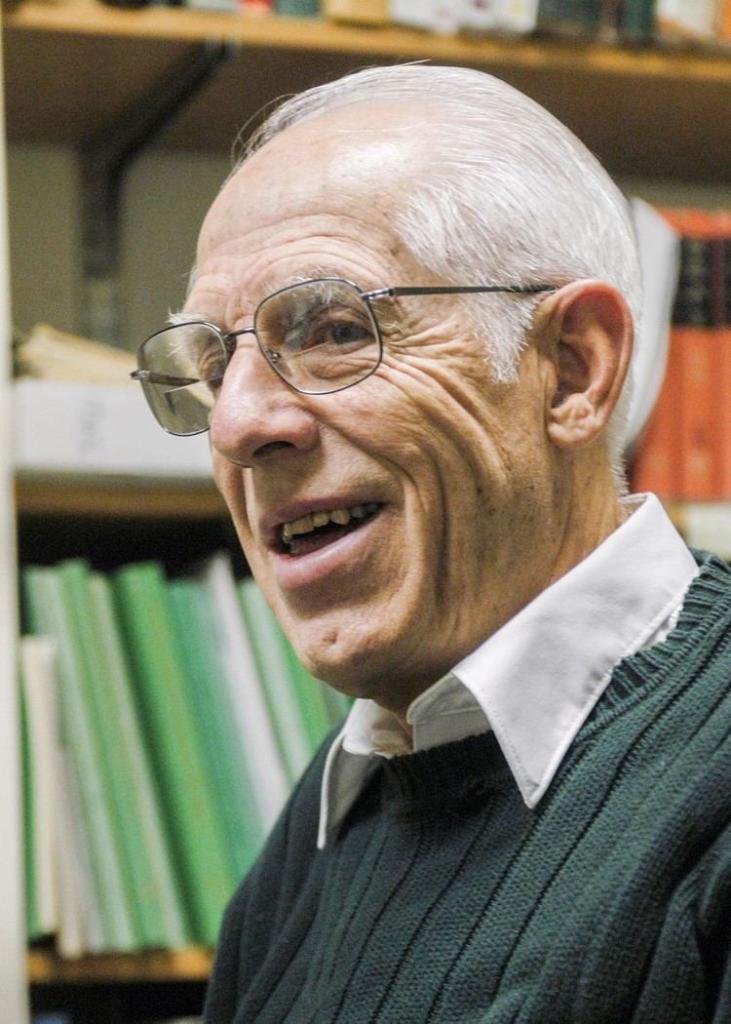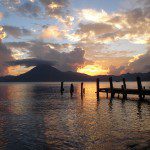
(Wikimedia Commons public domain photograph)
***
I’ve been hoping to find a nice uninterrupted period for reflection and writing. I intended to use it to write a little piece—inadequate though it would inevitably be —about my friend and long-time colleague John L. Sorenson, who died last week at the age of ninety-seven, only a few days after the passing of the Latter-day Saint Mesoamericanist V. Garth Norman.
Obituary for John Leon Sorenson
And here is the testimony that he wrote back in December 2009 for what was then called “Mormon Scholars Testify.”
Well, this looks to be the best opportunity that I’m likely to have for writing something about my colleague and friend John Sorenson. The past few days have been hectic, and the next few promise to be no less so. Accordingly, here goes:
In my view, to set down the most obvious thing for a blog such as this one, John L. Sorenson ranks with Hugh Nibley as one of the foremost pioneers of the serious study of the Book of Mormon that emerged after the Second World War. This was the time when believing, professionally trained, academic scholars began to focus their scholarly tools on the founding text of the Restoration. And they did so with spectacular and enormously influential results. But for a very long time, Hugh and John were basically working alone.
When, after long delay, John’s book An Ancient American Setting for the Book of Mormon appeared in 1985, I was thrilled. I could scarcely wait to get my copy. It opened a whole new vision of the Book of Mormon to me, as Hugh Nibley had earlier done for the book’s background in the ancient Old World. I still vividly recall writing in my journal, before I had even completely finished my first reading of Ancient American Setting, that it was the best thing that I had ever read on the archaeology and geography of the Book of Mormon. And then I corrected myself: No, I said, it was the first thing that I had ever read on the subject. Nothing else that I had read previously deserved to be mentioned in the same sentence with it.
John took relatively early retirement from the Department of Anthropology at Brigham Young University in order to devote his time to his writing and research, mostly (though not quite entirely) dedicated to Book of Mormon subjects, and he was jealous of his time, feeling that he had a great deal to do and only limited time in which to do it.
A story that I heard about him many years ago—I can’t remember who told it to me; perhaps it was even John himself—had it that his then bishop was pressing him and his wife to send in their missionary papers. But John felt that he was already on a mission, that he had a specific calling to fulfill and that it was urgently important. He didn’t believe that he should set his work on the Book of Mormon aside, something that very few could do, in order to serve a conventional mission. So he had declined. Repeatedly. But the bishop persisted. One day, John mentioned the situation to BYU’s president at the time, Merrill J. Bateman. President Bateman, who was not only the leader of BYU but a General Authority of the Church of Jesus Christ of Latter-day Saints, listened to him and then responded by setting him apart to continue the work that he was doing, telling him to inform his bishop that he was already serving a mission and could not be spared.
I hope the story is true, and that I’ve recounted it here more or less accurately.
John certainly used his retirement productively. Over the course of his entire career, he published something on the order of two hundred books and articles, including not only An Ancient American Setting for the Book of Mormon (1985) but Transoceanic Culture Contacts between the Old and New Worlds in Pre-Columbian Times: A Comprehensive Annotated Bibliography (with Martin Raish, 1988), Images of Ancient America: Visualizing Book of Mormon Life (1998), Mormon’s Map (2000), World Trade and Biological Exchanges before 1492 (with Carl L. Johannessen, 2004), and Mormon’s Codex: An Ancient American Book (2013)
One of the great privileges of my life was to get to know John Sorenson pretty well. First, I became acquainted with him as I came to be more and more involved with the old Foundation for Ancient Research and Mormon Studies (FARMS), which, obviously in alliance with Jack Welch, he had played a very important role in establishing at BYU. (In some ways, as I’ve often said, FARMS was the lengthened shadow of Hugh Nibley and John Sorenson — and, in a very real sense, the Interpreter Foundation and Book of Mormon Central continue to be part of that lengthened shadow still today.). As I’ve said, John was jealous of his time, and he had largely backed away from managerial responsibilities in FARMS by the time I came along—although he would eventually step back into the organization for a while in order, as its editor, to implement his radical and exciting vision for the Journal of Book of Mormon Studies. But I began to have fairly frequent meetings with him.
And then my wife and I were invited to join a monthly reading group in which John and his wife, Kathryn, had been participants since its founding in Santa Barbara, California, years earlier. It was and, roughly thirty-five years later, it remains an important element of our social and cultural lives. (After Kathryn’s death, he married Helen Christianson, who has also been an active and valued member of the reading group.) How could it not have been fascinating? With such members as the late Dwight Blood, the late George Bennion, Thomas Alexander, the late Davis Bitton, Thomas Rogers, James B. Allen, Cherry Bushman Silver, and others, our discussions have been enjoyable and intelligent. (The group also occasionally drew such figures in for our get-togethers as Richard Bushman, the late Leonard Arrington, and the recently departed Mario De Pillis.)
It was through years of interactions with John that we came to know him well, as a fiercely independent and skeptical mind who didn’t suffer fools gladly, as a man with passionately-held left-leaning political views (Davis Bitton and I could easily generate sparks when we challenged him from our own right-leaning positions), a genial person of good humor, a man of immense and rock solid integrity, and, very importantly, as a quietly but deeply faithful Latter-day Saint. (A recent comment from him, relayed by Jerry Grover, is so very expressive of that faith: Brother Grover asked him a question about an issue in the Book of Mormon, and John replied that he really wasn’t thinking about such matters much anymore. He would, he said, soon be meeting Mormon in person, and he would ask him then.)
As I’ve been thinking about John Sorenson’s passing, a song has come to my mind over and over again. I’ve never actually heard it; it was written upon the death of Dr. Karl G. Maeser, effectively the founder of Brigham Young University, in 1901. It was eventually included in the Latter-day Saint hymnal in 1948, but then omitted from the 1985 edition, thereafter. I close with it:
Come, lay his books and papers by,
He shall not need them more,
The ink shall dry upon his pen,
So softly close the door.
His tired head, with locks of white,
And like the winter’s sun;
Hath lain to peaceful rest tonight,
The teacher’s work is done.
His work is done; no care tonight
His tranquil rest shall break,
Sweet dreams, and with the morning light,
On other shores he’ll wake.
His noble thoughts; his wise appeal,
His works that battles won;—
But God doth know the loss we feel,—
The teacher’s work is done.
We feel it, while we miss the hand
That made us brave to bear,
Perchance in that near-touching land
His work did wait him there.
Perchance, when death its change hath wrought,
And this brief race is run,
His voice again shall teach, who thought
The teacher’s work was done.
I will miss John Sorenson as a friend and a colleague. I will always treasure the opportunity to have known him. And the Kingdom has lost one of its ablest defenders and most interesting thinkers. But what a place heaven will be!












